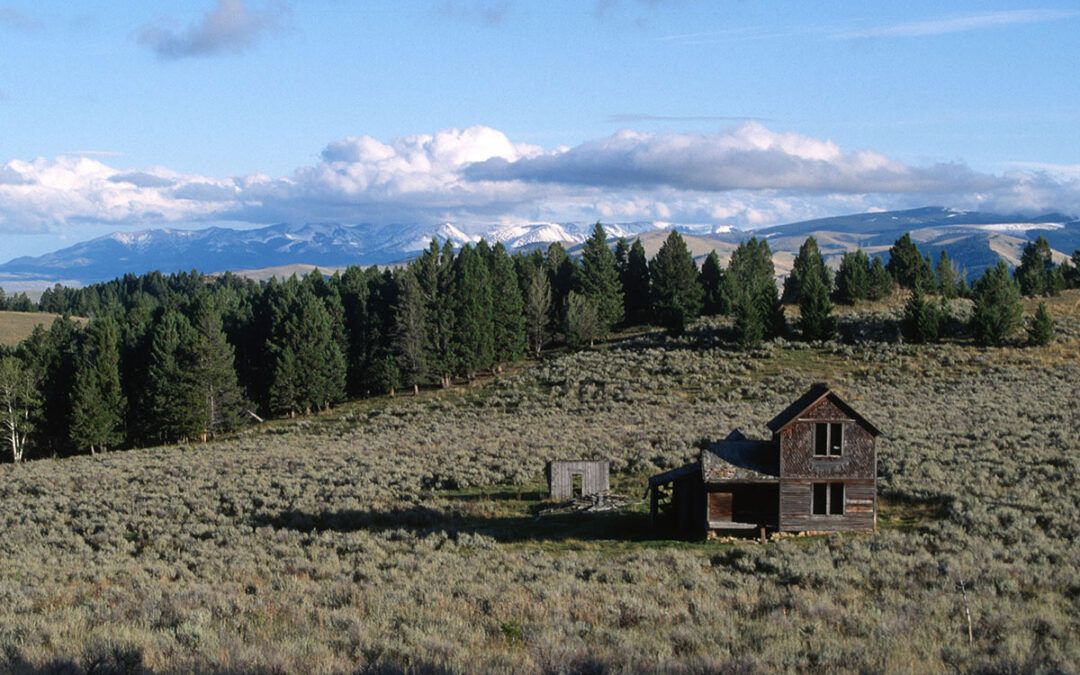The Alliance for the Wild Rockies and Native Ecosystems Council recently filed a lawsuit in federal court to stop the Castle Mountains logging and burning project in the Lewis and Clark National Forest. The Castle Mountains are a pristine, island mountain range in the headwaters of the Smith River, southeast of White Sulphur Springs, in an important wildlife corridor connecting Glacier and Yellowstone National Parks.
The project, approved during the Trump Administration, calls for bulldozing in 45.1 miles of new and reconstructed roads, and logging and burning on 22,500 acres, including almost 3,000 acres of logging in the Castle Mountains Inventoried Roadless Area. This roadless area would be designated as Wilderness in the Northern Rockies Ecosystem Protection Act, soon to be reintroduced in the new Congress.
Elk Habitat
The road density is already so high in this project area — over 3.0 miles/square mile — that it violates the road density limits in the agency’s Forest Plan. Additionally, an interagency agreement, known as the “Eastside Assessment” requires the Forest Service to analyze how temporary logging roads will impact habitat effectiveness for elk. Yet, the Forest Service refused to conduct this required analysis. Instead, the Forest Service falsely represented that the Eastside Assessment exempts temporary logging roads from habitat effectiveness analysis.
Old Growth Forests
The project would log hundreds of acres of old-growth forest and thousands of acres of mature forest. However, the Forest Service refused to conduct the old-growth analysis required by its own Forest Plan. The agency refused to apply its own Forest Plan definition for old-growth forest, making it impossible to determine if the project meets old-growth retention requirements for this area, and in general rendering the project’s entire old-growth analysis invalid.
Additionally, the Forest Plan lists goshawk as an “old-growth forest management indicator species” and requires 100% of goshawk nests to be monitored annually – the last survey found a 47% decline in active goshawk nests. The agency never disclosed this fact to the public in the project analysis. Moreover, the agency violated the Forest Plan requirement to publish a public “Evaluation Report” if active nests decline by 10% or more in a year.
White Sulphur Springs Municipal Watershed
Although the project analysis is unclear, logging and road reconstruction activities could occur in the White Sulphur Springs municipal watershed. The Forest Plan requires that Montana’s Department of Environmental Quality “must approve road construction, timber harvest, and mining activities in municipal watersheds.” The Forest Plan also mandates that in municipal watersheds “roads will not be constructed for surface resource management” and “timber should only be harvested where necessary to control a hazard to the water resources.” The Forest Service neither disclosed nor demonstrated compliance with these requirements in the project analysis.
Whitebark Pine
Whitebark pine is a high elevation keystone species: it protects watersheds by shading and slowing the melting of snowpack, thus maintaining critical water in Montana’s streams late into the summer. Whitebark pine is now “proposed” for Endangered Species Act listing. Nonetheless, this project includes hundreds of acres of clearcutting and burning up to 30 feet around individual whitebark pine “leave trees” – a practice that has an incredibly high failure rate for natural regeneration according to the Forest Service’s own study: RMRS-GTR-232.
We will not allow the government to flagrantly violate its own laws and destroy thousands of acres of our public forest lands in the process. We are exercising our First Amendment rights and taking the Forest Service to court. If normal citizens have to follow the law, so does the government.
Mike Garrity is the Executive Director of the Alliance for the Wild Rockies.
